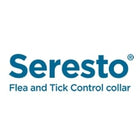Flea bites are a common but frustrating issue for dogs and their owners. These tiny parasites may be small, but their bite can cause severe discomfort, skin issues, and even allergic reactions in dogs. If not treated promptly, a flea infestation can multiply rapidly; therefore, it's essential to know how to recognize, manage, and prevent flea bites to protect your dog’s health and comfort.
This article will explore everything you need to know about dog flea bites — from the early signs to effective treatment and long-term prevention.
What Are Flea Bites and How Do Dogs Get Them?

Fleas are tiny, wingless parasites that feed on the blood of animals. They flourish in warm, moist climates and can rapidly spread across your pet, household, and yard. Dogs usually contract fleas through contact with infested animals, outdoor areas, or even humans who unknowingly carry fleas on their clothing.
Once fleas find a host, they bite the skin to feed. A single flea can bite your dog multiple times a day, causing intense itching and irritation.
Symptoms of Flea Bites in Dogs
Flea bites often appear as red, small, raised dots on the dog’s skin, usually around the:
- Lower back and tail
- Belly
- Inner thighs
- Neck and ears
Common symptoms include:
- Excessive licking, biting, or scratching at the skin
- Red, inflamed skin
- Hair loss or bald patches
- Scabs or open sores
- Restlessness or irritability
Certain dogs develop an allergic reaction to flea saliva, a condition referred to as flea allergy dermatitis (FAD). This can cause even more severe reactions, including intense itching, widespread rashes, and skin infections.
How to Confirm Flea Bites
It can be challenging to see fleas directly, especially in dogs with thick or dark coats. You can confirm a flea problem using the following methods:
- Flea comb: Use a fine-toothed comb to gently groom your dog’s coat, helping you spot live fleas or tiny black specks known as “flea dirt,” which are flea droppings.
- Flea dirt test: Place black specks on a wet paper towel—if they turn reddish-brown, it’s flea dirt, indicating a flea infestation.
- Veterinary exam: Your vet can diagnose flea allergy or skin infections caused by scratching and may recommend skin tests or further examination.
Treatment for Flea Bites in Dogs
Treating flea bites involves addressing both the dog’s symptoms and the underlying flea infestation. Here's a step-by-step approach:
1. Relieve the Itching
- Use soothing anti-itch shampoos or sprays designed for flea-bitten skin.
- Your vet may prescribe antihistamines or corticosteroids for severe itching or allergic reactions.
2. Kill the Fleas
- Use vet-approved oral or topical flea treatments, such as Simparica, NexGard, or Revolution.
- Consider fast-acting flea tablets that kill fleas within hours if your dog is distressed.
3. Treat the Environment
- Wash your dog’s bedding in hot water.
- Vacuum carpets, rugs, and furniture thoroughly.
- Use flea sprays or foggers that are safe for pets to eliminate fleas in your home.
4. Prevent Future Infestations
- Continue monthly flea prevention medication as recommended by your vet.
- Regular grooming and checking your dog after walks can help detect fleas early.
When to See a Vet
You should consult your vet if:
- Your dog has excessive itching or skin damage
- Symptoms persist even after using flea treatment
- There are signs of infection (pus, swelling, foul odor)
- You suspect a flea allergy, or your dog seems lethargic and unwell
Prompt veterinary care is crucial for dogs with flea allergy dermatitis or secondary skin infections that result from excessive scratching.
Preventing Flea Bites in the Long Term
Flea prevention is easier than dealing with an active infestation. Here are some simple tips:
- Use monthly flea preventatives year-round, even during colder months.
- Keep your yard trimmed and clean to reduce areas that attract fleas.
- Regularly bathe and groom your dog to spot fleas early.
- Avoid contact with stray or untreated animals.
- Make sure to treat every pet in your home, even if they aren’t showing visible signs of fleas.
Final Thoughts
Flea bites may seem like a small issue, but they can cause major discomfort and health problems in dogs. With early detection, proper treatment, and ongoing prevention, you can keep your dog healthy, happy, and flea-free all year round.
If you notice signs of flea bites or want advice on the best flea treatment for your dog, speak to your veterinarian. A proactive approach is the best way to protect your pet from these pesky parasites.







